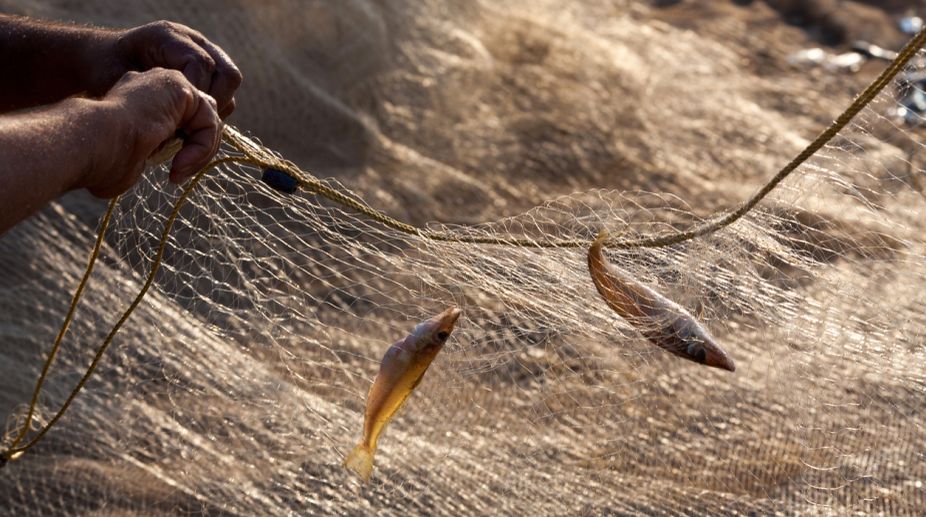Fishes form a significant link in the wetland eco-system. In contemporary times, rapid urbanisation and building of dams and barrages are posing a great threat to the piscean habitat.
In the Eastern Himalayan region, there are natural disasters like landslides that cause havoc to fish populations and conservation of fish diversity becomes highly essential to save the species from the brink of extinction.
Advertisement
Rampant fishing, discharge of untreated sewage wastes and construction of dams and barrages are the major factors responsible for threatening the piscean habitat in the rivers of the Darjeeling Hills.
Mainak Acharjee, head, department of zoology, Kalimpong College said, “Most of the rivers in the Himalayas flow with a high velocity. Fishes in those rivers have some peculiar modifications like the presence of adhesive organs near their throat, which helps them cling on to rocks for support. The Teesta — a glacial-fed river — has nine endemic fish species. A comparison of fish diversity in glacial-fed rivers and spring-fed hill streams like River Relli, a tributary of Teesta in the district of Kalimpong, highlights the fact that fishes migrate from the swift-flowing river to the hill streams for spawning and breeding owing to ecological factors. Teesta carries a huge amount of silt and becomes muddy during the rainy season, which is not conducive for breeding of fishes while Relli has crystal clear water.”
Acharjee took up a study on fish diversity in the Darjeeling Hills in 2007 and research work is on till date. The research has brought into focus the 65 types of fish species of the Teesta while Relli has 25 species.
Acharjee said, “Around 55 per cent of piscean habitat are threatened in Relli while more than 62 per cent of fish species are endangered in the Teesta owing to over exploitation, destruction of habitat, modification in the flow of water resulting from construction of barrages and dams and invasion of exotic species like cat fish that are introduced in the river, keeping with religious beliefs. Electro fishing is practiced in Relli, something that poses great danger to the fish habitat.” Fish species in the Darjeeling Hills are small and multihued and are broadly classified into three categories — ornamental, sports and food fishes.
Acharjee said, “The ornamental fishes are smuggled from the hills. Some of these fishes are highly preferred by anglers. Hence if the fish habitat is conserved well, the region can turn into an angling destination.”
So what are the ways by which the piscean habitat can be conserved? Acharjee said, “Aforestation is a major step towards habitat restoration. The use of boulders and construction materials need to be avoided while setting up barrages and fish ladders are preferable for construction of dams. Rampant fishing and discharge of sewage in the river need to be checked and prevention of landslides can go a long way in sustaining the fish habitat.”











